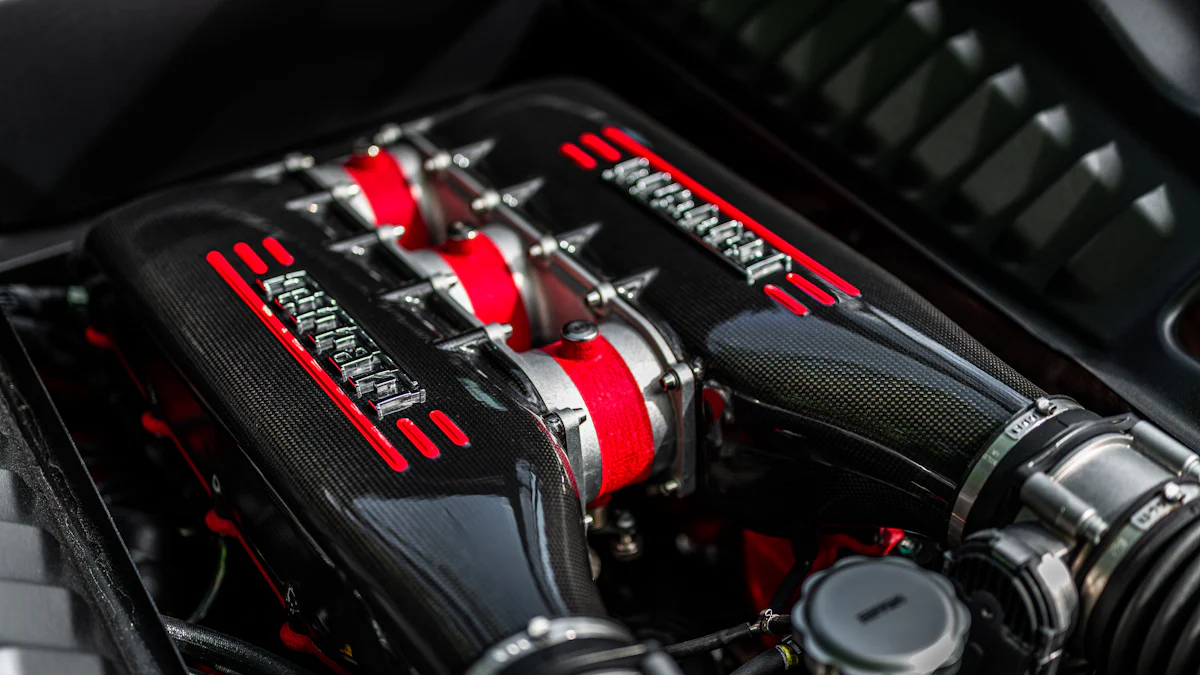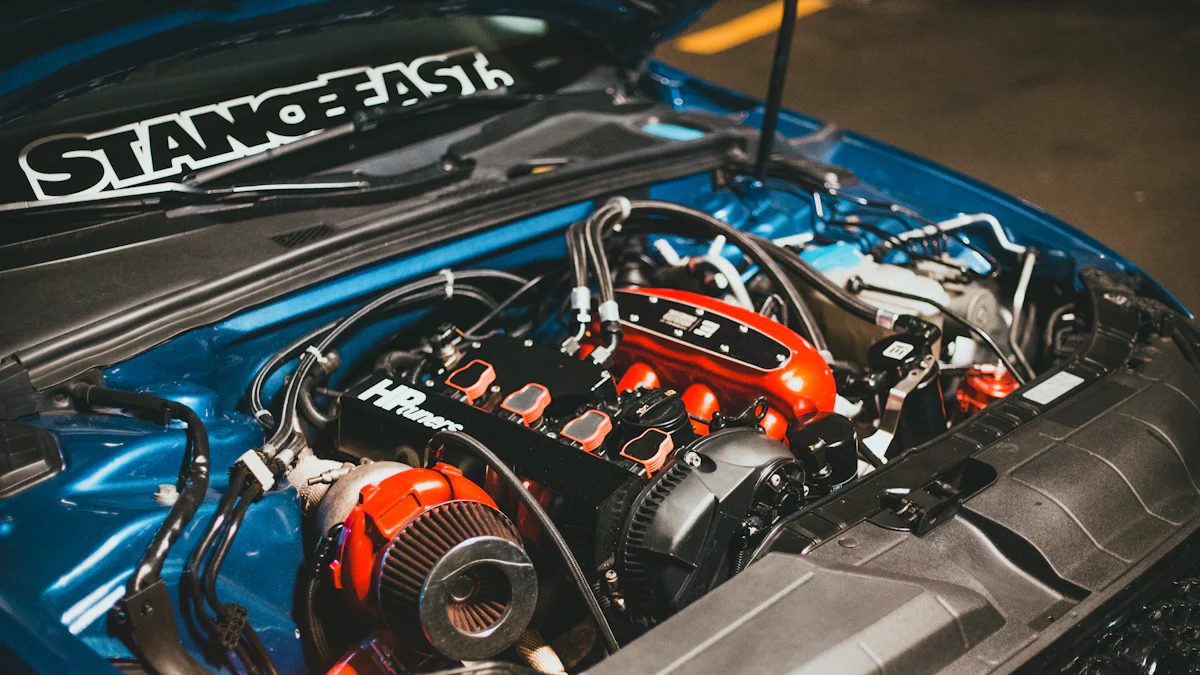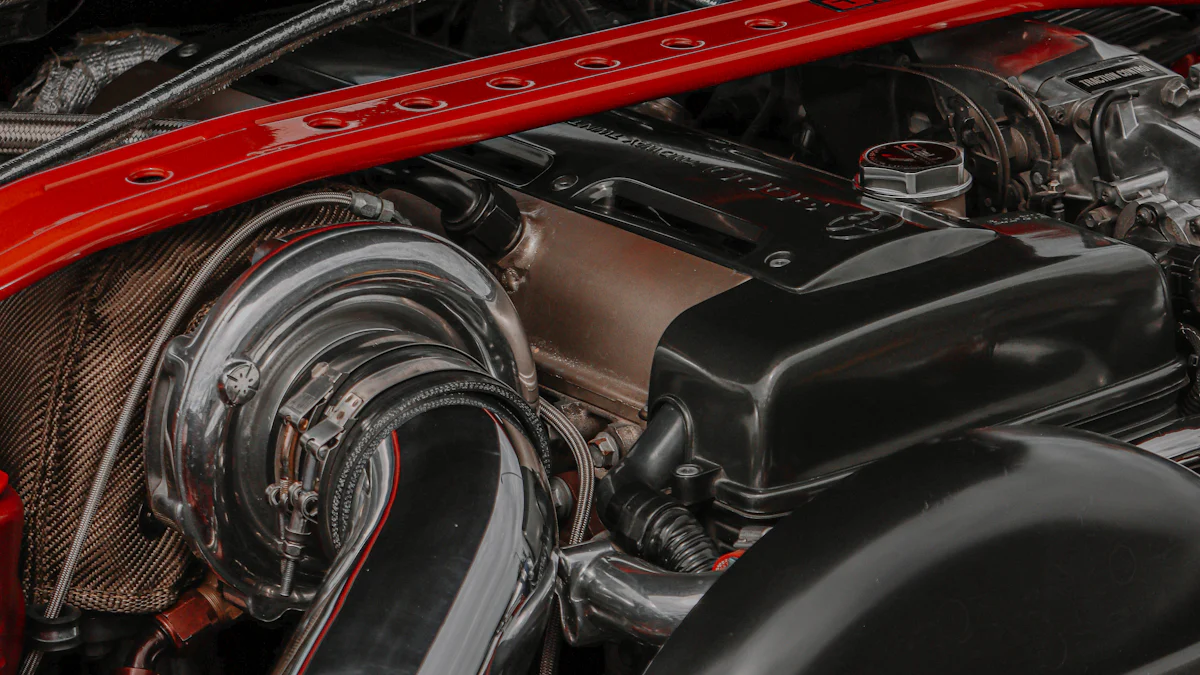
Intake manifolds play a crucial role in enhancing vehicle performance. These components ensure optimal air distribution to the engine, leading to improved horsepower and torque. Among car enthusiasts, D Series intake manifolds have gained immense popularity due to their efficiency and reliability.
The blog will explore various types of engine intake manifold options available for D Series engines. Readers can expect an in-depth look at dual-plane vs. single-plane, high rise vs. low rise, and square bore vs. spread bore designs.
Overview of D Series Intake Manifolds
What is a D Series Intake Manifold?
Definition and Function
An engine intake manifold serves as the gateway for air entering the engine. This component distributes air evenly to each cylinder, ensuring optimal combustion. The D Series intake manifold specifically caters to Honda’s D-series engines, known for their reliability and performance. By upgrading to a high-performance D Series intake manifold, car enthusiasts can achieve better airflow, resulting in improved horsepower and torque.
Benefits of Upgrading
Upgrading an engine intake manifold offers several advantages. Increased airflow leads to a better air-to-fuel ratio, which enhances engine efficiency. This improvement translates into higher horsepower and torque, providing a noticeable boost in acceleration. Enhanced fuel economy also results from this upgrade, making it a cost-effective investment for long-term performance gains.
“Upgrading to a high-performance intake manifold allows for increased airflow to the engine cylinders, generating a better air-to-fuel ratio, leading to improved horsepower, torque, acceleration, and fuel economy.” – Proflow Blog
Types of D Series Intake Manifolds
Dual-Plane vs. Single-Plane
The design of an engine intake manifold significantly impacts its performance characteristics. A dual-plane manifold features two separate planes that feed the cylinders. This design improves low-end torque by providing more consistent airflow at lower RPMs.
In contrast, single-plane manifolds offer superior performance at higher RPMs by allowing more direct airflow into the cylinders. This design benefits those seeking maximum horsepower output at high speeds.
- Dual-plane manifolds: Better low-end torque
- Single-plane manifolds: Higher horsepower at high RPMs
High Rise vs. Low Rise
The height of an engine intake manifold also plays a crucial role in its performance characteristics. High rise manifolds feature taller runners that provide longer paths for the air-fuel mixture to travel. This design enhances upper RPM range power by improving volumetric efficiency.
Low rise manifolds have shorter runners that offer quicker throttle response and better low-end power delivery. Choosing between these two depends on desired performance goals:
- High rise manifolds: Improved upper RPM power
- Low rise manifolds: Better throttle response and low-end power
Square Bore vs. Spread Bore
Another critical aspect of an engine intake manifold is its bore design—square bore or spread bore configurations cater to different carburetor setups.
Square bore manifolds feature four equal-sized openings that match square bore carburetors perfectly. This setup provides balanced airflow distribution across all cylinders.
Spread bore manifolds have larger primary bores with smaller secondary bores designed for spread bore carburetors like Quadrajet models commonly found on GM vehicles from past decades:
- Square bore: Balanced airflow distribution
- Spread bore: Optimized for specific carburetor types like Quadrajet models
Top D Series Intake Manifolds

Skunk2 Pro Series Intake Manifold
Features
The Skunk2 Pro Series Intake Manifold stands out with its innovative design. Skunk2 Racing employs a three-piece modular structure, which allows for customization and flexibility. The larger plenum and oversized runners enhance airflow significantly. This design ensures that the engine intake manifold can deliver maximum horsepower and torque gains.
The use of Computational Fluid Dynamics (CFD) testing in the design process results in a less restrictive airflow path. This feature contributes to improved performance by reducing air turbulence within the manifold. The direct-fit replacement aspect makes installation straightforward, preserving mid-range power while boosting top-end performance.
Performance Enhancements
Performance enthusiasts will appreciate the noticeable improvements offered by the Skunk2 Pro Series Intake Manifold. The larger plenum creates a more substantial volume of air available for combustion, leading to increased horsepower and torque. Enhanced venturi effects further optimize airflow, ensuring efficient fuel-air mixing.
This d series intake manifold excels in mid-range and top-end power gains, making it ideal for those seeking high-speed performance enhancements. By providing a more direct airflow path, this manifold maximizes engine efficiency and responsiveness.
Golden Eagle Intake Manifold
Features
The Golden Eagle Intake Manifold boasts advanced engineering designed using the latest CAD/CAM software. This precision manufacturing process ensures optimal fitment and performance for Honda’s D-series engines. The manifold features a robust construction that withstands high-pressure environments typical of turbocharged setups.
Golden Eagle’s design includes an enlarged plenum chamber that facilitates better air distribution across all cylinders. This feature enhances overall engine efficiency by promoting uniform combustion processes.
Performance Enhancements
Car enthusiasts looking for proven performance will find the Golden Eagle Intake Manifold highly effective. The enlarged plenum chamber increases volumetric efficiency, resulting in higher horsepower outputs across various RPM ranges. Turbocharged applications benefit significantly from this design due to its ability to handle increased air pressure without compromising structural integrity.
Improved throttle response is another key advantage provided by this d series intake manifold. Drivers experience quicker acceleration and smoother power delivery throughout their driving experience.
Airstream Intake Manifold
Features
The Airstream Intake Manifold offers unique features tailored to enhance engine performance comprehensively. Its design focuses on maximizing airflow while minimizing resistance within the system. High-quality materials ensure durability under extreme operating conditions commonly encountered during high-performance driving scenarios.
This engine intake manifold incorporates precision-engineered runners that optimize air distribution into each cylinder uniformly—resulting in consistent combustion cycles essential for peak engine output levels.
Performance Enhancements
Performance gains achieved through installing an Airstream Intake Manifold are substantial—especially noticeable at higher RPMs where efficient airflow becomes critical for maintaining optimal power levels consistently over extended periods of operation timeframes involved during racing or spirited driving sessions alike!
Enhanced throttle response coupled with improved low-end torque characteristics make this particular model suitable not only just track-focused builds but also daily-driven vehicles requiring reliable yet potent upgrades capable of transforming ordinary commutes into exhilarating experiences every time behind wheel!
Installation and Tuning Tips

Professional Installation
Importance of Professional Installation
Professional installation ensures optimal performance for any D Series intake manifold. Experts possess the necessary skills and tools to handle intricate tasks. Incorrect installation can lead to air leaks, reduced efficiency, or even engine damage. Professionals guarantee a secure fit and proper alignment.
A professional installer also understands the nuances of different manifold designs. Each type requires specific techniques for mounting and securing. This knowledge prevents potential issues down the road. For example, rechecking mounting bolts after installation avoids loosening during operation.
“Proper installation is crucial to avoid air leaks and ensure optimal performance.” – American Trucks
Steps Involved
- Preparation: Gather all necessary tools and materials. Ensure the engine cools down before starting.
- Removal: Disconnect the battery to prevent electrical hazards. Remove existing components obstructing access to the intake manifold.
- Cleaning: Clean the mating surfaces on both the engine block and new manifold thoroughly.
- Installation: Position the new intake manifold carefully onto the engine block. Secure it with bolts following a specific torque sequence.
- Reassembly: Reconnect all previously removed components in reverse order.
- Inspection: Double-check all connections and fasteners for tightness.
Following these steps ensures a smooth installation process without complications.
Tuning for Optimal Performance
Using a Standalone System
A standalone system offers precise control over engine parameters, enhancing tuning capabilities significantly. This system allows adjustments tailored specifically for upgraded intake manifolds like those in D Series engines.
Standalone systems provide real-time data monitoring through advanced sensors integrated into various parts of an engine setup:
- Air-fuel ratio
- Ignition timing
- Boost pressure (for turbocharged applications)
These features enable fine-tuning adjustments that maximize performance gains from upgraded manifolds effectively.
“Standalone systems offer unparalleled control over critical engine parameters.” – Performance Tech Magazine
Common Tuning Adjustments
Several common tuning adjustments optimize performance when using high-performance D Series intake manifolds:
- Air-Fuel Ratio (AFR): Adjusting AFR ensures efficient combustion by maintaining an ideal mixture of air and fuel within cylinders.
- Ignition Timing: Advancing or retarding ignition timing affects power output at different RPM ranges—critical for maximizing horsepower gains from upgraded manifolds.
- Idle Speed Control: Fine-tuning idle speed stabilizes idle quality while accommodating increased airflow from high-performance intakes.
- Throttle Response Calibration: Calibrating throttle response improves acceleration characteristics by reducing lag between pedal input and actual throttle opening.
Implementing these adjustments enhances overall driving experience through smoother power delivery across varying conditions encountered during daily commutes or spirited drives alike!
Upgrading to a D Series intake manifold offers numerous benefits. Enhanced airflow results in better horsepower and torque. Improved fuel efficiency adds value for long-term performance.
Professional installation ensures optimal results. Experts handle intricate tasks, preventing potential issues. Proper tuning maximizes the manifold’s performance gains.
Choosing the right intake manifold transforms vehicle performance. The journey from ordinary to extraordinary begins with this upgrade. Embrace the power boost and enjoy every ride!
Post time: Jul-16-2024



